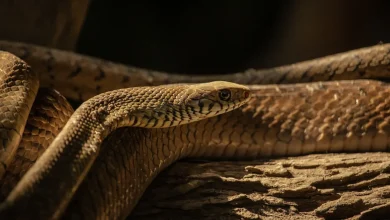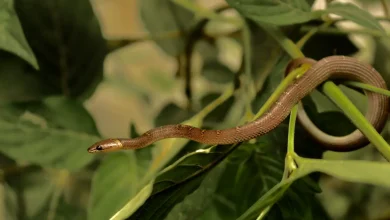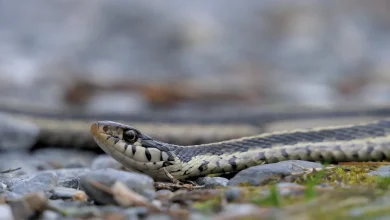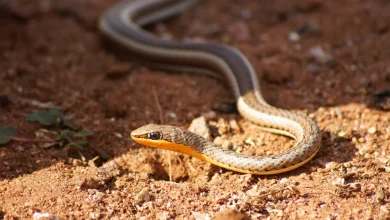Dragon Snake – Yes, It’s Real! (Photos + Video)
[Page Updated: 19 July 2023]
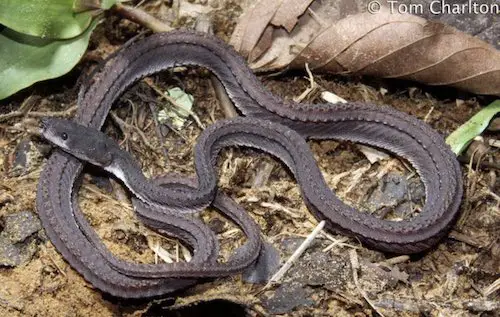
The dragon snake found in Thailand, Indonesia, and Malaysia is a unique snake with odd scalation and coloration. This snake is not necessarily that difficult to find, but few have found one due to it’s preference for rocky streams in southern Thailand and further south. Not many herpers making the effort to reach them, I suppose. Even if you do make the trip to find a dragon snake, there is no guarantee you’ll find one in a few nights of herping.
Note – in Thailand, there is a very long (huge) dragon snake called Naga that is from Buddhist mythology, Thai mythology… these snakes are featured at many Buddhist temples around Thailand and in other countries. They are said to be magical protectors of Buddha. The reptile this page describes, the Dragon Snake (Xenodermus javanicus) doesn’t resemble this snake of folklore in any way.
Xenodermus javanicus – Dragon Snake
Also known as the Rough-bodied Dragon snake, Javan Tubercle snake, Javan Mud snake, or Rough-backed Litter snake.
The genus name Xenodermus is derived from the Greek language. Xeno means strange. Derma is skin.
Thais Say: Ngoo tong kow or Ngoo kon tong kow. Please keep in mind that almost nobody you will meet in Thailand will know the name of this snake. Names in Thai are descriptive of what the snake looks like or does, so it helps little to ask if Thais know this snake unless you’re talking to a biologist. This snake is very rare in Thailand and only occurs in the two southernmost provinces.
Description: The main differentiator between this snake and all other snakes in Thailand is the texture of the scales and the rows of bumpy scales that are almost like a dragon neck. Large bumpy angled scales form three rows on the top of the snake, one over the vertebral column, and one over the top of each lateral (side). The Dragon Snake has a grey head with black-spotted snout covered in small scales with keels, not head shields. Scales in mid-dorsal area are intermixed with rows of large bumpy scales and smaller scales. Pupils are vertical. Single nostril that points forward. Body is grey. Venter is grey. Lateral (sides of snake) is near vertical. Similar snake body type is the Dark or Dusky Wolf Snake, seen below.
Length: Up to 43 cm in length (maximum). Females are longer and thicker than males, and also have shorter tails. These are long and thin snakes similar to bronzeback snakes or those of the Lepturophis genus like L. albofuscus. Photo below.
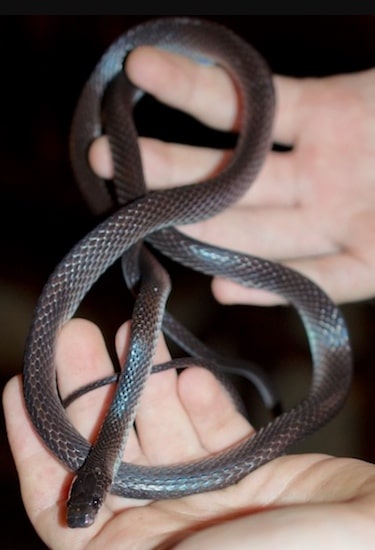
Habitat: Usually found near water and very wet areas. Most of these snakes are found near freshwater streams where a food source is plentiful.
Location/Range: Found in Myanmar, Thailand, Brunei, Malaysia, and Indonesia. See map.
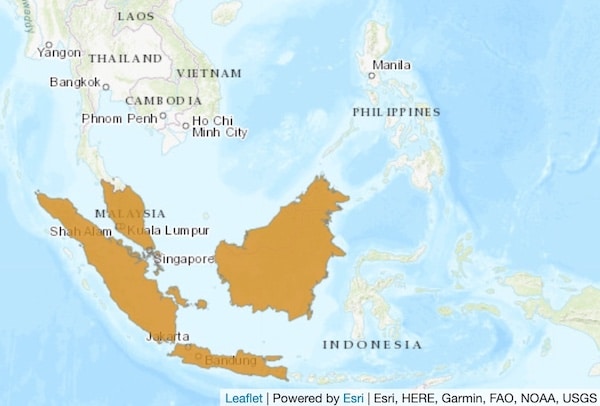
Prey: Dragon snakes are known to eat frogs, fish, and tadpoles and probably a variety of other small animals.
Behavior: Nocturnal, terrestrial, and fossorial. Found most often next to streams and on wet earth. Defense tactic is to freeze body solid – stiff – and not move. It doesn’t seem to hold this position for very long.
Breeding: Typically this species lays between 2–4 eggs.
Venom toxicity: Non-venomous and completely harmless for bites to people. Of course there is some risk of infection as with all puncture wounds. Clean the wound and let it bleed to remove bacteria. Apply antibacterial cream.
Treatment: No antivenin is needed, as bites from this snake are rare and nearly always without medical complication.
Conservation: Last assessed in 2011, and due for a review. This snake is highly prized in the pet trade and probably significant numbers have been taken from the wild in the past decade. At present (June 2021) the IUCN Redlist lists this snake as LC – least concern. Still, please do not take this snake from the wild to line your pockets with cash. Conserve our natural resources.
Video about Captive Breeding/Keeping: Dragon Snake care necessary for captivity. We do NOT recommend you attempt to keep this very fragile snake in captivity the vast majority die in captivity. Please reconsider. If you do, take it upon yourself to use the knowledge found in the video below to give your snake the best chance of surviving being taken out of the wild.
Dragon Snake Frequently Asked Questions
Are Dragon Snakes Good in Captivity?
No, absolutely not. You will likely lose your investment and that may be hundreds of dollars. These are delicate snakes that do not adapt well to captivity. If you watch the video above, you’ll see the numerous factors you’ll need to take into consideration to keep this snake. Even then, there is no guarantee and your dragon snake may die in a short time.
Why Is It Called the Dragon Snake?
The texture of the scales and odd scalation with raised and enlarged scales in 3 rows down the back make this snake resemble a lizard more than a snake. This is one of the oddest scaled snakes in the world.
Dragon Snake Scientific Classification
Kingdom: Animalia
Phylum: Chordata
Class: Reptilia
Order: Squamata
Suborder: Serpentes
Family: Xenodermidae
Genus: Xenodermus
Discovered by Johannes T. Reinhardt, a Danish zoologist, in 1836.
Species: Xenodermus javanicus
Photo Credit: At top of page, the featured image is also © Tom Charlton and used with permission.
- Common Non-Venomous Snakes Post #1 Post #2
- Brahminy Blind Snake
- Brown Kukri Snake
- Copper-Headed Racer / Radiated Rat Snake | IndoChinese Rat Snake | Oriental Rat Snake / Banded | Red-Tailed Racer | Ridley’s Racer | White-Bellied Rat Snake
- Dragon Snake
- Laotian Wolf Snake
- Malayan Bridle Snake
- Orange-Bellied Snake
- Red-Tailed Pipe Snake
- Reticulated Python | Blood Python | Burmese Python
- Striped Bronzeback
- Sunbeam Snake

